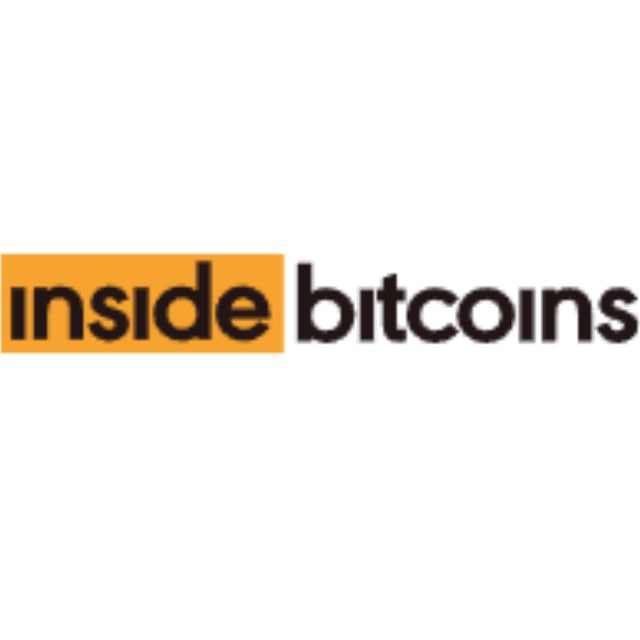Bitcoin Volatility Collapse Signals Big Move Ahead—Is a BTC Rally Incoming?
Bitcoin’s recent price stability is drawing significant attention from analysts and investors, as historical patterns suggest that low volatility often precedes substantial market movements. Recent data indicates that Bitcoin’s one-week realized volatility has dropped to 23.42%, a level rarely observed in the past four years.
A CNF report highlighted that Bitcoin’s funding rate has fallen to 0%, raising questions about the next directional move for BTC’s market price. Daan Crypto Trades echoed this sentiment in a tweet, stating that BTC remains in a tight range.
$BTC Range still ranging.
Meanwhile, volatility is trending down as price is getting more and more compressed.
Even during yesterday's drama, price still closed at the same price region which it has done so for the past 2 weeks. pic.twitter.com/pu13Y9J15r
— Daan Crypto Trades (@DaanCrypto) February 22, 2025
Similar volatility compressions occurred in October 2024 (22.88%) and November 2023 (21.35%), both of which were followed by notable price shifts. This historical trend suggests that the current market calm could be a precursor to significant volatility.
The prolonged period of reduced volatility has led experts to predict a substantial price movement for Bitcoin. Historically, low-volatility phases have been followed by price fluctuations ranging from 20% to 30% or more.
Analysts are closely monitoring technical indicators, particularly tightening Bollinger Bands, which often signal upcoming volatility.
According to multiple sources, several key factors could drive Bitcoin’s next major price movement.
Firstly, influential figures in the crypto industry, such as Michael Saylor, CEO of Strategy, have hinted at increasing their Bitcoin holdings. Institutional interest of this scale often strengthens market sentiment, potentially triggering higher demand and price appreciation.
Secondly, the U.S. administration’s increasingly favorable stance on cryptocurrency regulation could play a crucial role in shaping market dynamics. Policies aimed at fostering crypto adoption and providing clearer regulatory frameworks may boost investor confidence, leading to greater institutional and retail participation.
Lastly, Bitcoin’s price is currently experiencing a period of compression alongside historically low volatility, a combination that has previously signaled significant market shifts. Traders are closely monitoring key support and resistance levels, as a breakout in either direction could set the stage for Bitcoin’s next big move.
At the time of writing, according to CoinMarketCap data, Bitcoin is trading at $95,713, reflecting a 0.50% decrease in the past day and a 0.59% decline over the past week. The intraday high reached $96,581, with a low of $95,097. See BTC price chart below.
Standard Chartered, Animoca, and HKT to Develop HKD-Pegged Stablecoin
Standard Chartered Bank Hong Kong (SCBHK), Animoca Brands, and Hong Kong Telecommunications (HKT) have partnered to establish a joint venture (JV) focused on issuing a Hong Kong dollar-backed stablecoin.
The JV intends to apply for a license under the Hong Kong Monetary Authority’s (HKMA) new regulatory framework.
HKD-Backed Stablecoin
According to the official press release, SCBHK, Animoca Brands, and HKT have engaged in HKMA’s stablecoin issuer sandbox since July 2024. The trio has been assessing how stablecoins can facilitate financial market development and payments by connecting Web3 and traditional finance.
The partnership is in line with Hong Kong’s ambition to strengthen its role as a global digital assets hub. By leveraging expertise across banking, telecommunications, and blockchain, the JV aims to create a secure and regulatory-compliant stablecoin framework.
The initiative aligns with the city-state’s broader strategy to boost digital finance adoption while ensuring compliance with evolving regulatory requirements. In an official statement, Bill Winters, Group Chief Executive of Standard Chartered, said,
“Digital assets are here to stay and the development of different forms of tokenized money is integral to the advancement of this industry. That is why we are actively involved in various Central Bank Digital Currencies, tokenized deposits, and, of course, stablecoins projects. We are introducing solutions and instruments that service this market and meet the growing client demand. As public chain instruments with proven use cases, stablecoins play a critical role in the overall digital asset ecosystem.”
Hong Kong Eyes Bitcoin as a Strategic Asset
Besides the ambitious stablecoin initiative, Hong Kong is also considering adding Bitcoin (BTC) to its fiscal reserves as a hedge against inflation and a store of value.
Wu Jiexhuang, a Hong Kong legislative council member, recently proposed using foreign exchange funds to acquire Bitcoin, citing potential benefits such as attracting talent, boosting the local crypto industry, and increasing tax revenue.
He said that leveraging China’s “one country, two systems” framework, adding Bitcoin to Hong Kong’s reserves could give the region an early advantage and help mitigate economic instability from its wider adoption in traditional financial markets.
The post Standard Chartered, Animoca, and HKT to Develop HKD-Pegged Stablecoin appeared first on CryptoPotato.
Building the Next-gen Creator Economy With AI Agents | Opinion
Disclosure: The views and opinions expressed here belong solely to the author and do not represent the views and opinions of crypto.news’ editorial.
The creator economy has seen explosive growth over the past decade, yet many content creators, writers, educators, and artists face a fundamental dilemma: monetization and content distribution often favor centralized platforms, which impose rigid rules, fees, and algorithms that limit creators’ autonomy and earnings.
You might also like: Creator economy 2.0: AI and web3 define the digital success | Opinion
While web3 solutions promise greater freedom, they have thus far often had poor user experiences and required creators to navigate complex onboarding processes and applications. However, blockchain-based autonomous agents are emerging as a new alternative for creators, seamlessly handling tasks, sparking new creative possibilities, and finally putting creators back in control of their work and income.
Creator assistants
Autonomous agents simplify content distribution and monetization by automating tasks such as pricing, licensing, and revenue sharing, freeing creators to focus on their craft. For instance, these agents can optimize pricing strategies based on market demand or manage revenue splits transparently. Unlike traditional AI tools, decentralized agents can operate trustlessly onchain, ensuring transparency, reducing costs, and eliminating third-party intermediaries.
By leveraging programmable rules and onchain verification, autonomous agents also allow creators to explore new revenue streams—such as micro-licensing or fractional ownership of digital assets—giving them control over their intellectual property while tapping into innovative monetization models. Ethical concerns, such as licensing and copyright issues, can be addressed through programmable licensing rights embedded in content metadata.
Art curator agents
In the digital art space, autonomous agents are already changing how content is curated, traded, and displayed. These agents can autonomously acquire and curate digital content based on predefined rules through onchain verification. By operating on a decentralized infrastructure, art curator agents reduce risks such as fraud or manipulation commonly associated with centralized platforms.
Programmable licensing embedded in the metadata of digital art ensures all transactions respect the creator’s terms. This eliminates ambiguities around copyright and guarantees fair compensation for creators, even as their work circulates across different platforms.
Intelligent creative tools
Developers are integrating autonomous agents into creative applications, offering creators powerful tools to enhance their work. These agents can act as co-creators or intelligent managers to generate, refine, and manage content in new ways. For example, an agent embedded in a video editing platform might suggest edits based on audience engagement data or generate metadata to improve discoverability.
The use of trustless, onchain computation means that creators are not reliant on centralized APIs or platforms, which could compromise their data or artistic vision. Unlike many current AI agents that depend on centralized APIs like OpenAI, these decentralized agents operate sustainably and transparently, avoiding vulnerabilities tied to centralized control.
Where to start for creators
For creators just starting to explore decentralized platforms, it is crucial to confirm that the platform they use provides reliable and sustainable storage for their data. Many traditional NFTs store the artwork and metadata separately, which can create issues if the centralized storage provider discontinues service or stops paying for the storage costs. That’s a recipe for future headaches.
Decentralized platforms like Bazar take a different approach, bundling everything together—your work, its rights, and ownership—in one permanent transaction on Arweave, called an atomic asset. Think of it like a self-contained digital artwork that carries its own rule book, no matter where it travels online. This is especially important as AI increasingly interacts with creative work, making the ability to embed programmable licensing rights essential. To that end, Bazar is experimenting with a data licensing framework called the Universal Data License that empowers artists to encode clear usage rules directly into their creations.
When art includes these clear rules about how it can be used, autonomous agents can act like digital rights managers, making sure terms are followed everywhere the work appears. These rules provide transparency for users and AI agents alike, ensuring consistent adherence to terms of use. It’s like having a tireless advocate ensuring creators maintain control over how their work is used, securing credit and compensation even as their art evolves and takes on new life across the digital landscape.
The future of autonomous agents
Over the next decade, autonomous agents will play an increasingly important role in the creator economy. By decentralizing content monetization and distribution, these agents reduce reliance on traditional platforms, providing creators with more tools and resources to maintain control over their work while streamlining business operations. They will also help identify new monetization strategies, intelligently manage distribution, and handle data-driven financial decisions.
Autonomous agents offer an opportunity for creators to regain control over their work and innovate in ways that would be previously constrained by centralized systems. As these tools evolve, they will help build a creator economy that prioritizes transparency, empowerment, and sustainable growth for all.
Read more: AI is the best thing to ever happen to content creators in the web3 era | Opinion
Author: Nick Juliano
Nick Juliano is the lead developer of Bazar Marketplace.
Top Crypto to Invest in Right Now February 22 – Vana, BinaryX, The Sandbox
The cryptocurrency market remains dynamic, with recent price shifts reflecting optimism and caution among investors. The global market cap is $3.2 trillion, experiencing a slight 1.06% decline over the past day. Trading volume has also dipped, down 9.20% to $105.55 billion in 24 hours. Bitcoin continues to dominate, holding 59.93% of the market share, though its influence has slightly decreased.
Following Bitcoin’s strong rally into 2025, market sentiment leans bullish, with many anticipating further momentum. However, most altcoins have retraced from their initial gains. While some see this as a temporary pullback, others believe certain projects could lead to the next wave of growth. With the market in flux, analysts are searching for the top crypto to invest in right now .
BNX is currently valued at $1.14, showing an 18.95% increase over the past week and an impressive 306.63% rise over the last month. This strong performance highlights growing market interest in the token. Meanwhile, MIND of Pepe has secured over $6 million in funding, signaling strong investor confidence. The token is priced at $6.26, with a modest 0.86% gain in the past 24 hours.
Chainlink is a blockchain network that connects smart contracts with real-world data. Chainlink solves this limitation by securely integrating external data, enabling more advanced applications.
The platform operates as a decentralized network, meaning multiple independent participants, known as node operators, maintain and verify data. These operators earn revenue by running the infrastructure that delivers accurate and reliable information to blockchain-based applications.
Chainlink’s decentralized price feeds support various financial services in decentralized finance (DeFi), securing significant value across the industry. Currently, the price of LINK, Chainlink’s native token, is $17.66, reflecting a 6.83% decline over the past 24 hours.
Despite this short-term dip, it has performed well relative to its initial sale price. The trading activity, represented by a 24-hour volume-to-market cap ratio of 0.1009, suggests moderate liquidity. Technical indicators show mixed signals.
The 14-day Relative Strength Index (RSI) is 44.11, meaning the token is neither overbought nor oversold and may move sideways. The 30-day volatility sits at 14%, suggesting stable price fluctuations compared to more volatile cryptocurrencies.
BinaryX (BNX) serves as the core cryptocurrency for the BinaryX ecosystem, supporting its DAO and gaming products. Initially designed as a decentralized trading platform, BinaryX has shifted its focus toward GameFi, developing blockchain-based games and providing Initial Game Offering (IGO) services. The platform aims to help traditional game developers transition into Web3.
Currently, BNX is priced at $1.14, reflecting an 18.95% increase over the past week and a significant 306.63% gain in the last month. Market sentiment remains bullish, with analysts predicting a potential rise to $3.66 by March, representing a 222.82% increase. However, the Fear & Greed Index sits at 49, indicating neutral investor sentiment.
Furthermore, BNX has shown strong liquidity, with a 24-hour trading volume to market cap ratio of 1.4203, suggesting active market participation. Over the past 30 days, the token recorded gains on 15 occasions, demonstrating consistent performance. The 14-day Relative Strength Index (RSI) is at 49.65, signaling a neutral stance.
BinaryX’s evolution into a GameFi platform aligns with the growing interest in blockchain-based gaming. Its expansion into IGOs highlights its role in bridging traditional gaming with decentralized finance.
Vana is a blockchain network designed to give users control over their personal data. It allows individuals to convert private datasets into financial assets by aggregating them for AI model training. Through Data Decentralized Autonomous Organizations (Data DAOs), users can tokenize and monetize their data while maintaining ownership and control over its use.
The token is currently priced at $6.26, reflecting an intraday increase of 0.86%. Over the past seven days, it has risen by 3.25%. The 24-hour trading volume stands at $117.67 million, marking a significant 231.45% increase. The high 24-hour volume-to-market cap ratio of 1.0774 suggests strong liquidity.
Vana’s 14-day Relative Strength Index (RSI) is at 69.05, indicating neutral market conditions. This suggests that the token may continue to trade sideways rather than experiencing sharp price movements in the short term. The 30-day volatility rate is at 23%, which is relatively moderate. Based on current projections, the token’s price could rise by 226.68%, potentially reaching $19.94 by March.
MIND of Pepe is an AI-powered crypto project built on Ethereum. It interacts with social media, engages with influencers, and shares opinions on meme coins. The goal is to gain popularity and use its influence to offer insights. Over time, it plans to create its tokens and provide exclusive benefits to presale investors.
The platform functions as an AI-driven analytics tool that tracks market trends. By processing large amounts of data, it aims to help investors make informed decisions. However, real-time sentiment analysis is complex, and its accuracy remains uncertain. While the concept is ambitious, how well it performs in practice is yet to be seen.
Currently, MIND is in its presale phase, with tokens priced at $0.0033722. As more tokens sell, the price increases, encouraging early investment. The project has raised over $6 million, reflecting investor interest.
MIND also offers a staking system where users lock up tokens in exchange for rewards. So far, over 1 billion tokens have been staked. Rewards are higher for early participants and decrease as more people join. This design encourages adoption but gradually spreads token distribution.
Visit MIND of Pepe Presale
The Sandbox is a blockchain-based virtual world where users can create, trade, and monetize digital assets in a gaming environment. It combines decentralized autonomous organizations (DAO) and non-fungible tokens (NFTs) to give players ownership over their creations. The platform follows a “play-to-earn” model, allowing users to engage as creators and gamers while earning rewards.
Transactions within The Sandbox use the SAND utility token, which enables users to buy, sell, and interact with in-game assets. This model aligns with blockchain principles by ensuring transparency and user control over digital property.
Currently, The Sandbox’s price is $0.35, reflecting a 4.39% decrease in the past 24 hours. Despite this short-term dip, the token remains above its initial sale price. Liquidity appears stable, with a 24-hour trading volume-to-market cap ratio of 0.1831.
Market indicators suggest neutral momentum. The 14-day Relative Strength Index (RSI) sits at 47.69, meaning the token is neither overbought or oversold. With a 30-day volatility of 16%, price fluctuations have been relatively moderate. This suggests that The Sandbox may continue trading sideways in the short term.


 最低價
最低價 最高價
最高價 















































